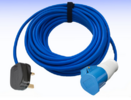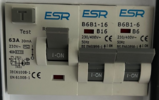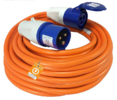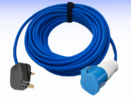I think something which needs to be borne in mind is that to blow a 13A plug fuse, purely, as the result of excessive current passing through it, requires at least something like 22A (about 5 kW at 230V) to flow through it for an appreciable period of time.Yes although it seems to take some time for the fuse to blow ...
However, if the fuse is appreciably heated by some external cause (e.g. due to poor connections/contact, it may blow with a much lower amount of current flow through it.





